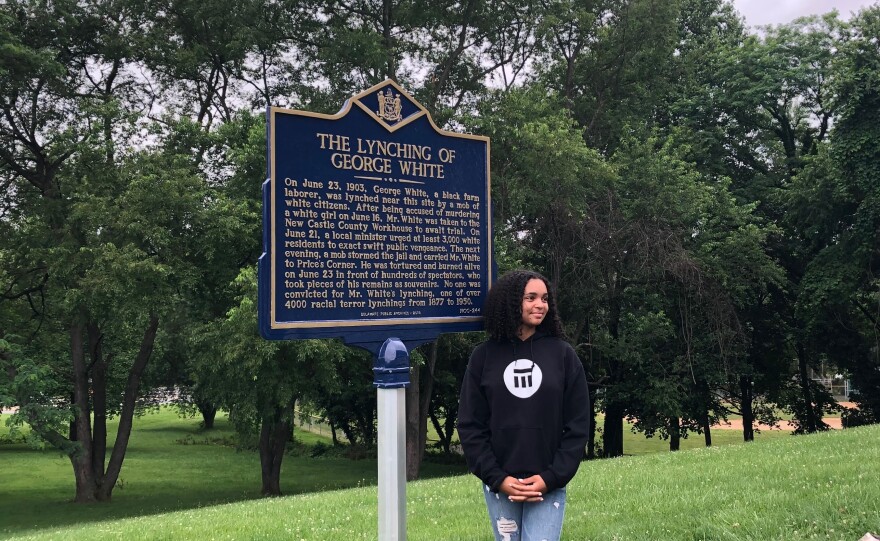The historical marker installed in memory of lynching victim George White this summer has been stolen from Greenbank Park in Prices Corner.
New Castle County police are investigating after they were contacted by someone who noticed the marker was missing Thursday and a large hole was in the ground where it once stood.
Sixteen-year-old Savannah Shepherd led the effort to have the marker installed. It was put up in the park on June 19 and dedicated June 23.
“It was definitely not the call I was expecting today, but I was just very, very shocked. And I tried not to make any assumptions about who had done it or why they did this. But there’s obviously thoughts running through my head," said Shepherd. "But just overall it’s surprise, it’s upsetting."
Shepherd worked with State Sen. Darius Brown (D-Wilmington) to get the marker installed. Brown funded it with money from his Community Transportation Fund allocation. He says he "could not be more disappointed" by the theft.
“I think that we absolutely need to look at this as a hate crime. I think that we need to look at this in the context of what the marker stood for and the ugly part of our history that it commemorated and how some individuals may not want to have that history told.”
“It’s an unfortunate dynamic that George White is pretty much lynched twice,” said State Rep. Sherry Dorsey Walker (D-Wilmington). “He was lynched at the site in June of 1903, and then here we are in 2019, with so much hate rhetoric in our communities that has led to this situation where we are right now.”
New Castle County Executive Matt Meyer (D) also condemned the theft.
“The alleged theft of the lynching memorial marker at Greenbank Park will only bring renewed attention to the horror and injustice that occurred right here in New Castle County,” Meyer said in statement. “I call on whoever is responsible for this crime to do the right thing and return the marker to us.”
Shepherd hopes some good can come from the incident.
“I would love to reach out to the community, to continue the conversation, so that everyone can have a better understanding about why we did erect this marker and the importance of it so that we can have understanding and hopefully avoid this from recurring,” she said.
Brown agrees. "I really look at this unfortunate incident as a way to continue the mission and the spirit of why we celebrated the lynching a little over a month ago, and to bring our community together again to conintue to have conversations and strengthen our community around race relations," he said.
“Delaware must reconcile the fact that this was in fact a slave state,” said Dorsey Walker. “We really need to start dealing with some of the sins of our past so that we can have a better present and future.”
Shepherd and Brown say they plan to make sure a replacement marker is installed and another ceremony is held in George White’s memory. Officials from the Public Archives estimate a replacement would cost $2,205, including fabrication and installation.
George White, an African American, was dragged from a Prices Corner-area workhouse and burned alive by a white mob in 1903. He had been accused of killing a white woman and denied involvement.
His is the most well-documented lynching in Delaware, and the first to be memorialized with a historic marker.
Delaware Public Media's Sarah Mueller and Tom Byrne also contributed to this story




